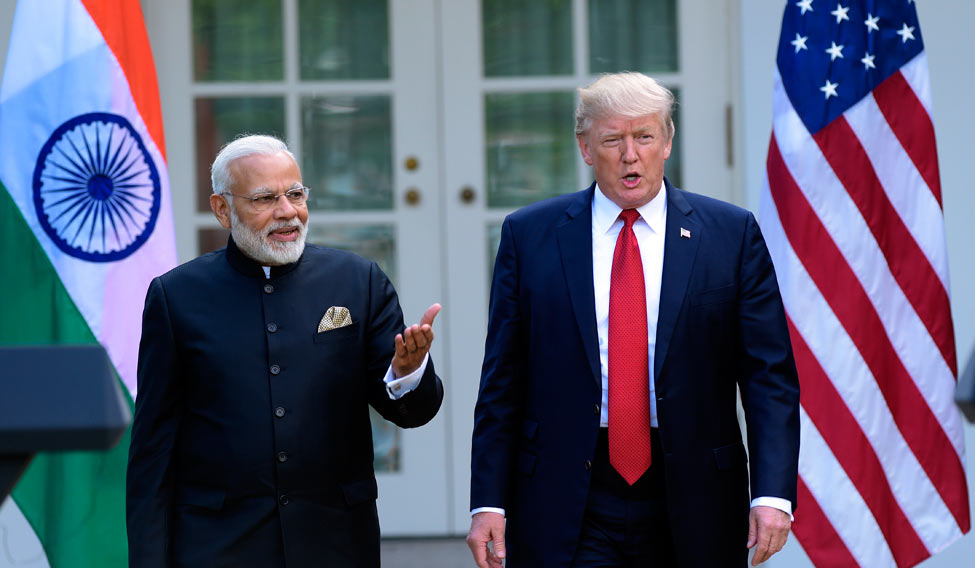One year after the mercurial and unpredictable Donald Trump assumed office as the 45th President of the USA (POTUS) and his many outbursts and acerbic comments about the big powers (China, Russia, EU) and global leaders over the last 12 months, the one major bi-lateral that has been relatively stable and rancor-free is that of the US with India.
At a personal level, the US President has a productive working relationship with Prime Minister Narendra Modi and while their friendship is yet to reach the ‘my friend Donald’ level – it is evident that the nature of their cordial engagement has worked largely in India’s favor.
Various statements by senior members of the Trump team including the Secretaries of State and Defence have dwelt on the bi-lateral with India in very positive terms. While this is a continuation of the policies following from the Bush-Manmohan Singh 2005 breakthrough, there was considerable anxiety in Delhi in the early months of the Trump presidency about a possible break, for every major Obama policy had either been reversed or put on hold.
However, this did not happen and on the contrary, India has been referred to in very glowing terms as an emerging major global power; a net security provider in the Indo-Pacific; and with the USA, a book-end of stability in an uneasy and turbulent world. This is heady stuff and some of the adjectives and praise are on the generous side.
India has potential, for sure, to be a relevant global power and a swing-state in the evolving strategic framework of the early 21st century, but it has not yet 'arrived', for it has many critical deficiencies in the security domain that cannot be swept under the carpet of bonhomie.
The semantic choice of words in relation to India and the turn of phrase in the statements and documents of the Trump team, wherein the earlier Asia-Pacific has now become the Indo-Pacific is laden with considerable import. Again, this is favorable to India but with a caveat.
India cannot become an effective and credible net security provider if it does not swiftly redress the many gaps in the security cum strategic arena. Consequently the US (irrespective of who is the president) will be less inclined to identify India as a valued partner. Currently there is a high degree of empathy in the Beltway for Delhi but this needs to be nurtured and insulated both from the policy impulsiveness and related vagaries of the POTUS; and the drift cum implementation deficit disorder that plagues Raisina Hill.
Many of India’s principal interlocutors and well-wishers bemoan the fact that the Modi team is very good at visibility, dialogue and expansive joint statements, but they often get mired at the level of earnest intent and do not translate into speedy implementation.
Thus with the current trans-border military capability that India possesses, my assessment is that notwithstanding the grand vision of an Indo-Pacific with two book-ends, Delhi will not be able to play a major role commensurate with its potential and what is being envisioned by its more empathetic partners.
To the credit of the US, it had even promised to provide the needed support to India in terms of technology for this purpose, subject to Delhi accepting certain agreements and security protocols. The scope of this defence and military cooperation had been first outlined in the June 2005 Rumsfeld-Mukherjee agreement, fine-tuned by Defense Secretary Ashton Carter during Obama II and is now supported by the Trump team—perhaps with greater focus on the transactional / financial element.
The ball is in the Indian court and it remains to be seen if there will be any traction during the second year of the Trump presidency, which will also be the last phase of the Modi government, for national elections are due in early 2019.
Whatever be his other policy lurches, President Trump has been more definitive and assertive than his predecessor in relation to China and Pakistan – but how this statement of intent, either by tweet or in the US national security strategy document translates into action remains moot. In year two of Trump?
In the last few weeks, it was evident that India and the US shared similar concern about the release by the Pakistani authorities of JuD chief Hafiz Saeed, but how will they realise their objective? Again, opaque.
It also appears that the US and India are on the same page in voicing their reservations regarding China's One Belt One Road (OBOR) project. How this will shape their own bi-lateral relations with Beijing on one hand and the India-US partnership may be described as a ‘work-in-progress’ in the first year of the Trump presidency.
It is reasonable to infer that President Trump will visit India in his second year in office – before the Modi election juggernaut is launched and hopefully the more critical defence and military related issues currently in limbo will be satisfactorily energised.
But on balance, the first year of the turbulent Trump presidency has been adequately beneficial for India. And this despite the Jerusalem vote in the UN, which may be seen as an indicator of the resilience of the bi-lateral relationship.
The views expressed in this article are solely those of the author and do not necessarily represent the views of the publication.





